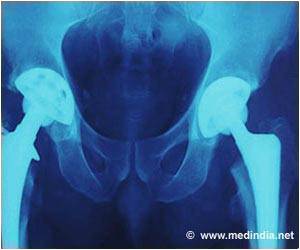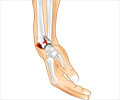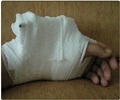Bisphosphonate drug holiday is associated with fracture risk, according to a study. Patients with prior vertebral fracture with a long drug holiday had an increased risk of major osteoporotic fractures (MOFs).

‘Bisphosphonate drug holiday is associated with at least partial loss of their protective effect against fractures. Patients with prior vertebral fractures with long bisphosphonate drug holiday are at a higher risk of major osteoporotic fractures (MOFs)’
Read More..




Rare but severe side effectsRead More..
Long-term treatment with bisphosphonates is associated with an increase in rare, albeit serious side effects, especially osteonecrosis of the jaw or certain fractures of the thigh.
"Residual effects on bone metabolism appear to persist for some time after bisphosphonates are discontinued," says Professor Johannes Pfeilschifter. "However, the number of studies that have investigated the risks and benefits of bisphosphonate drug holidays is limited."
Two years of interviews
In order to obtain additional information, the research team interviewed patients who had been treated with these drugs in the preceding four or more years.
Advertisement
Rise in fracture risk in patients with previous vertebral fractures
For a more detailed analysis of the changes in fracture risk in relation to the time since the start of a drug holiday, the researchers used a method that represented the therapy status of each patient at any time in the past year as a moving average.
"This approach enables us to compare the risk of fractures between different periods of time since the therapy was interrupted and minimizes the systematic bias related to the higher probability of taking a drug holiday in patients with a lower risk of fractures," says Dr. Henrik Rudolf, who performed the statistical analyses.
The analyses suggest that longer drug holidays from bisphosphonates are associated with an at least partial loss of their protective effect against fractures.
The analyses revealed a so-called interaction (meaning that a characteristic modified the relative risk of fractures with increasing holiday length): "In patients who had already had vertebral fractures, the risk of MOFs for a time of more than 12 months since the therapy was paused increased 3.5 times compared to the risk in the second half of the first year of the drug holiday," explains Professor Hans Joachim Trampisch, senior professor at the Department of Medical Informatics, Biometry and Epidemiology.
The corresponding estimated value was considerably lower in patients without a previous vertebral fracture. The sample size was too small to enable adequate estimates of changes in fracture risk in the patients without previous vertebral fractures with respect to other relevant risk factors for fractures.
"The findings of our study should be considered in the context of all study reports on long-term therapy with bisphosphonates and bisphosphonate drug holidays," emphasizes Johannes Pfeilschifter.
"The decision regarding further management of osteoporosis in patients on bisphosphonate therapy should be made individually for each patient based on the benefits and potential risks of the available treatment options, and should be re-evaluated on a periodic basis."
Study limitations
The researchers point out that, as different bisphosphonates were merged for the analysis, the study does not allow to draw any drug-specific conclusions on fracture risk associated with bisphosphonate holidays.
Due to the limited number of respective observations, the study also provides little information on bisphosphonate drug holidays in men and in patients who have been treated with bisphosphonates for more than ten years.
Source-Eurekalert















